Pokémon NFT Cards Disrupt Collecting
How NFT Tokenization Is Revolutionizing Pokémon Cards in the U.S.
The Pokémon card market in the U.S. has always been a battleground of nostalgia, speculation, and collector obsession. But in 2025, a quiet revolution is underway — NFT tokenization is reshaping how these iconic cards are authenticated, traded, and valued.
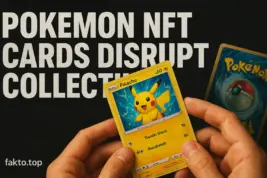
By linking physical cards to blockchain-based certificates, collectors gain verifiable ownership, traceable provenance, and instant liquidity. No more shady eBay deals or questionable PSA slabs. Tokenized Pokémon cards are becoming digital assets with real-world backing, and the implications stretch far beyond hobbyist circles.
Reddit threads and Twitter spaces are buzzing with debates on grading standards, fractional ownership, and the future of collectibles. This isn’t just hype — it’s infrastructure. And while the mainstream media is still catching up, NFT-native platforms are already onboarding thousands of collectors into this hybrid ecosystem.
Why Tokenization Solves Old Problems
For decades, the Pokémon card market has struggled with counterfeits, inconsistent grading, and fragmented marketplaces. Tokenization offers a blockchain-native solution: each card is linked to a unique NFT that stores metadata about its condition, origin, and ownership history.
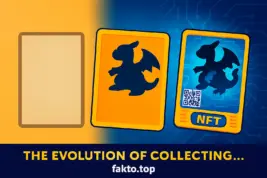
This eliminates the need for centralized grading authorities and allows for peer-to-peer verification. Platforms like Courtyard and Tokenproof are pioneering this space, offering vault-backed cards with digital twins. The result? Instant trades, transparent pricing, and reduced fraud. Even legacy collectors are starting to embrace the tech, especially as insurance and authentication become easier. Compared to traditional collectibles, tokenized cards offer a smoother UX and better security. And while some purists resist the shift, the data shows growing adoption — especially among Gen Z investors who already live in crypto-native ecosystems.
For a deeper look at how NFT infrastructure is evolving, check out our analysis of NFT market trends in 2025, where tokenization is a key driver of growth.
Fractional Ownership and Liquidity
One of the most disruptive aspects of NFT tokenization is fractional ownership. Rare Pokémon cards — like 1st Edition Charizard or Trophy Pikachu — can now be split into shares, allowing multiple investors to co-own a single asset. This unlocks liquidity in a traditionally illiquid market. Instead of waiting months for a buyer, collectors can sell fractions instantly on platforms like Otis or Rally.
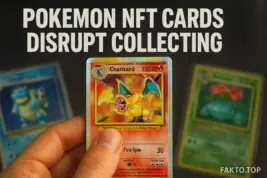
It also democratizes access: you don’t need $50,000 to invest in a grail card anymore. Just $50 and a MetaMask wallet. This model mirrors what we’ve seen in fine art and real estate tokenization, but with a pop culture twist. The emotional connection to Pokémon makes these assets more than just financial instruments — they’re cultural artifacts.
For a parallel in the NFT space, consider the underappreciated AbsMouseism collection, which blends narrative depth with tokenized art, yet remains undervalued on OpenSea.
How U.S. Collectors Are Reacting
American collectors are split. Some embrace tokenization as the future of trading cards, citing speed, transparency, and global access. Others worry about losing the tactile experience — the feel of cardboard, the ritual of grading. But even skeptics admit the benefits of blockchain-backed provenance. Twitter threads from influencers like @CardboardCrypto and Reddit subs like r/PokemonTCG show growing interest, especially among younger users.
The ability to trade 24/7, verify ownership instantly, and access global liquidity is hard to ignore. Plus, tokenized cards can be integrated into digital games, metaverse galleries, or staking protocols. This convergence of physical and digital is creating new use cases that traditional collectors never imagined. For a broader view of how crypto-native audiences are evolving, see our deep dive into Solana’s 2025 roadmap, which highlights how NFT infrastructure is becoming mainstream.
Tokenized vs Traditional Pokémon Cards: Key Differences
To understand the shift, let’s break down how tokenized Pokémon cards compare to traditional ones. While both formats appeal to collectors, the blockchain layer adds new dimensions — from liquidity and transparency to gamified ownership. Below is a comparison that’s been circulating in Discord groups and NFT Twitter threads, especially among U.S.-based collectors exploring hybrid models.
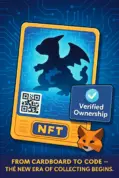
| Feature | Traditional Pokémon Cards | Tokenized Pokémon Cards (NFT-backed) |
|---|---|---|
| Authentication | Manual grading (PSA, Beckett) | Blockchain-verified metadata |
| Ownership Transfer | Physical shipping, escrow risk | Instant digital transfer via smart contracts |
| Liquidity | Low, slow resale | High, fractional trading possible |
| Provenance | Opaque, hard to trace | Transparent, immutable history |
| Utility | Display or resale only | Playable in metaverse, stakeable, gamified |
What This Means for the Future of Collectibles
The tokenization of Pokémon cards isn’t just a tech upgrade — it’s a cultural shift. As digital-native generations take over the collector economy, physical assets will increasingly be paired with blockchain layers. This doesn’t mean cardboard disappears. It means it evolves. Tokenized cards can live in both worlds: stored in vaults, displayed in AR galleries, and traded on-chain. The implications for insurance, lending, and even museum curation are massive.
We’re seeing early signs of this in niche NFT collections like Square Mice, which blend storytelling, tokenization, and emotional resonance. These projects aren’t just collectibles — they’re cultural artifacts with embedded narratives. Pokémon, with its global fandom and iconic IP, is perfectly positioned to lead this hybrid revolution.
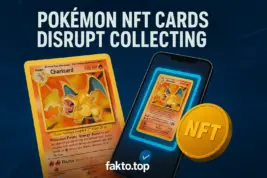
FAQ: Tokenized Pokémon Cards
Q: Do I need crypto to buy tokenized Pokémon cards?
A: Yes, most platforms require a wallet like MetaMask and ETH or USDC. Some are adding fiat onramps soon.
Q: Can I still hold the physical card?
A: Absolutely. Many services vault the card and issue an NFT twin. You can redeem the physical anytime.
Q: What happens if the vault loses my card?
A: Reputable platforms offer insurance and legal guarantees. Always check terms before buying.
Q: Are tokenized cards more valuable?
A: Not always. Value depends on rarity, demand, and platform trust. But liquidity and transparency often boost appeal.
Q: Where can I trade them?
A: OpenSea, Courtyard, and specialized marketplaces. Some are building Solana-based platforms — see our LabubuCoin breakdown for how meme coins and collectibles are converging.
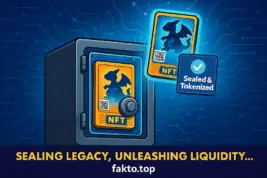
Final Thoughts: Is This Just a Fad?
No. Tokenization is not a passing trend — it’s a structural upgrade to how we interact with physical assets. Pokémon cards are just the beginning. From sneakers to sports memorabilia, everything collectible is being reimagined through the lens of blockchain.
The U.S. market, with its deep collector culture and crypto adoption, is leading the charge. And while not every project will succeed, the infrastructure is here to stay. For creators, this opens new monetization paths. For collectors, it offers security and liquidity. And for culture, it means stories and memories can live on-chain.
If you’re exploring this space, don’t overlook emerging collections like AbsMouseism — still under the radar, but rich in symbolism and narrative depth. For broader market forecasts, check out our full NFT market outlook for 2025.
Disclaimer / No Liability
We are not financial advisors and assume no responsibility for any decisions you make.Cryptocurrencies are highly volatile and risky. You may lose all invested capital.
Always do your own research (DYOR) and consult qualified professionals before making any financial or legal decisions.We make no guarantees regarding the accuracy, completeness, or reliability of the information provided.
References to third-party services or projects do not imply endorsement.
By using this site, you agree that all actions are at your own risk and you release the site owners and authors from any liability.
